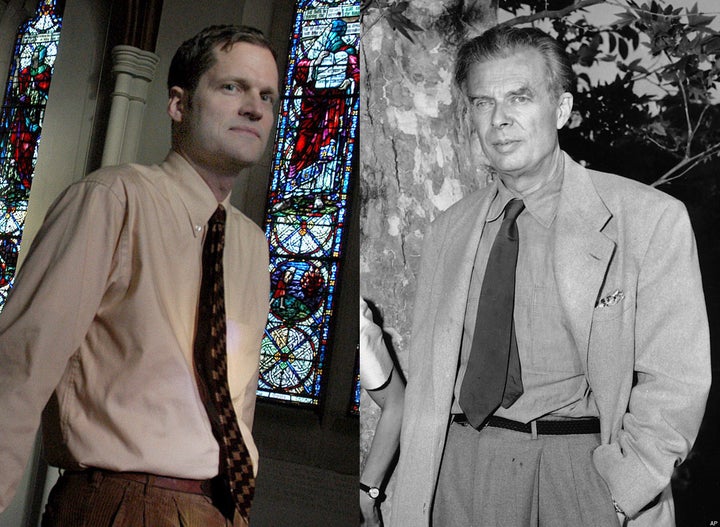
In his new book, God Is Not One, Boston University scholar Stephen Prothero attacks the naïve notion that all religions are essentially the same. "This is a seductive sentiment in a world in which religious violence can seem as present and potent as God," Prothero wrote in a well-circulated op-ed piece. "But it is dangerous, disrespectful and untrue" -- dangerous because the idea is perpetrated by some well-meaning idealists to promote peace, reconciliation and tolerance, and Prothero thinks those worthy goals are better served by understanding the real and potent differences among religions.
It's a message that needed to be stated, and the attention Prothero's book has garnered adds something useful to the dialogue. But some of his statements have been erroneous, and it would be a shame if the misconceptions were to spread. (Note: I have not read Prothero's book; my comments are based on his essays and interviews.)
As Prothero notes, religions "diverge sharply on doctrine, ritual, mythology, experience and law." Nothing could be more obvious. With the possible exception of some stubborn or ill-informed individuals, those who promote the idea that religions are essentially one are not blind to their differences; they just choose to focus on their similarities, usually pointing to universal ethical principles. As mentioned, Prothero considers their method of fostering inter-religious harmony to be wishful thinking.
But he also singles out for approbation some highly influential thinkers associated with the so-called perennial philosophy, chiefly Aldous Huxley, Joseph Campbell and Huston Smith. Here he does a disservice by attributing to those public intellectuals positions that they never actually advocated.
The crux of perennialism is that the mystical offshoots of all the religions share striking similarities. Huxley, who had no use for ordinary religion at all, made that perspective famous in his classic 1944 anthology, The Perennial Philosophy, in which he compiled writings from mystics of various traditions around common themes. He did not give a hoot about religious dogma, everyday observances, or claims about history; his sole concern was the direct encounter with the divine. Scholars have found fault with Huxley's methods, but the book has inspired generations of spiritual seekers in their quest for higher states of consciousness. And the perennial perspective has even more currency these days, since much of what used to be called mysticism has become common practice, especially among those who have been influenced by Hinduism and Buddhism.
Unlike their friend Huxley, Campbell and Smith studied ordinary religion as scholars and recognized that it could have value for its followers. But they, too, made clear a distinction between normative religion and the domain of the mystics. Campbell, the great popularizer of comparative mythology, and Smith, the author of the best-read text on comparative religion, would be the last people on earth to say that all religions are the same. What they would say, and did say repeatedly, is that the mystics declared the universe to be one, or that God (depending on how you define it) is One, or that the individual soul and the ground of being are one. For over 50 years (including in the Foreword to my own upcoming book) Smith has distinguished between what he calls the exoteric (outer) aspects of religion and the esoteric (inner). In the former, he has said repeatedly, diversity reigns, while in the latter we find a striking unity of experience.
It should be noted that Huxley, Campbell and Smith were all mentored in their formative years by swamis of the Vedanta Society (in Los Angeles, New York and St. Louis respectively). They heard early on, and quoted frequently, the verse in the Rig Veda that is commonly translated as "Truth is one, the wise call it by many names." By now, having been promulgated by various gurus, Yoga masters and scholars of Hinduism, the phrase is well known in the United States. But it does not mean that all religions are the same. It means that all legitimate religious practices, if taken to their deepest levels (an historic rarity, to be sure) eventually transcend their own dogmas, narratives and rituals to converge at the oneness of existence.
In short, the perennialists (and the Vedantists and yogis) contend that religion as such is gloriously diverse, but religious experience is not. You can see this in the mystical literature (as William James and others did, even before Huxley, Campbell and Smith). And you can find it by talking to spiritual practitioners of different stripes about their deepest inner experiences. If you do (as I have), you'll hear tradition-specific language diminish in favor of universal terms such as "vastness" and "oneness" and "emptiness" and "bliss."
So, Prothero is right to point out the dangers of an all-religions-are-the-same attitude. But he's wrong to dismiss perennialism, which has never been more relevant, or to blame perennialists because their nuanced perspective has been misconstrued by starry-eyed New Agers. The same thing, of course, happens to the perspective he champions. Because there are intractable differences among religions, people conclude that they are irreconcilable and will invariably come into conflict. (I've heard people say, because of his book's title, that Prothero believes there is more than one god.) Never underestimate the tragic human tendency to oversimplify the complex.
The truth is, religions are both different and alike, depending on where one looks. And we need to look at the whole picture, because when we lean too far in either direction we lose our balance.
